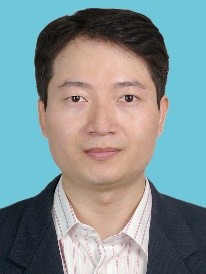Qingdong Zheng
Perovskite & Organic devices
Nanjing University, Nanjing, China
Email: zhengqd@nju.edu.cn
Biography
Qingdong Zheng received his B.S. degree and M.S. degree from East China University of Science & Technology. He obtained his Ph.D. degree from the State University of New York at Buffalo. After carrying out his postdoctoral research at the Johns Hopkins University, he joined the Fujian Institute of Research on the Structure of Matter, Chinese Academy of Sciences, and became a full professor in 2010. He then joined the College of Engineering and Applied Sciences at Nanjing University in Dec. 2021. Selected honors and awards include the “100 Talents Programme” of CAS in 2010, and distinguished Young Scholars of National Science Foundation of China in 2013. His main interests focus on multifunctional molecular materials and devices and in particular on the fields of semiconducting materials and related interfacial materials for organic solar cells. He has published over 150 papers in peer-reviewed journals such as Nature Photonics, Joule., Energy Environ. Sci., National Science Review etc. He is currently serving as editorial board members for National Science Review, eScience etc.
Abstract for Presentation
Organic semiconductors based on ladder-type heteroheptacenes without sp3-hybridized carbons
Control over the intermolecular interaction as well as the molecular orientation of organic semiconductors with respect to the substrate plays a critical role in determining the performance of polymer solar cells (PSCs). In this talk, we will focus on the development of novel electron-transporting materials based on ladder-type heteroheptacenes without sp3-hybridized carbons for efficient PSCs. A series of ladder-type heteroheptacene-based small molecules with branched or unbranched side chains flanked in different positions of their conjugated backbone, or with varied electron withdrawing end groups flanked on the same conjugated backbone, were designed and synthesized to investigate the effect of side-chains and end group on the crystallinity, molecular orientation, charge transport and photovoltaic properties of these ladder-type heteroheptacene-based semiconductors. Furthermore, we report the effect of noncovalent intramolecular interactions on the photovoltaic performance of the nonfullerene acceptors. The removal of the sp3-hybridized carbons leads to novel nonfullerene acceptors with efficient electron transport. As results, the best-performance nonfullerene acceptor with optimized molecular orientation affords an outstanding power conversion efficiency of 17.93% which is the highest among all the A-D-A type nonfullerene acceptors reported to date.
References
[1] Y.L. Ma, D.D. Cai, S. Wan, P.S. Wang, J.Y. Wang, Q.D. Zheng*, Angew. Chem., 59 (2020) 21627.
[2] Y.L. Ma, D.D. Cai, S. Wan, P. Yin, P.S. Wang, W.Y. Lin, Q.D. Zheng*, Nat. Sci. Rev., 7 (2020) 1886.
[3] Y.L. Ma, M. Zhang, S. Wan, P. Yin, P.S. Wang, D.D. Cai, F. Liu*, Q.D. Zheng*, Joule, 5 (2021) 197.
[4] C.Q. Tang, X.L. Ma, J.Y. Wang, X. Zhang, R.C. Liao, Y.L. Ma, P. Wang, P.S. Wang, T. Wang*, F.J. Zhang*, Q.D. Zheng*, Angew. Chem., 60 (2021) 19314.
[5] Q.S. Tu, W.J. Zheng, Y.L. Ma, M. Zhang, Z.J. Li, D.D. Cai, P. Yin, J.Y. Wang, S.C. Chen, F. Liu, Q.D. Zheng*, CCS Chem., 4 (2022) doi: 10.31635/ccschem.022.202101524.
WELCOME TO CHINA TO ATTEND THE ICANS
23-26 August, Nanjing, China
Connect with us:



